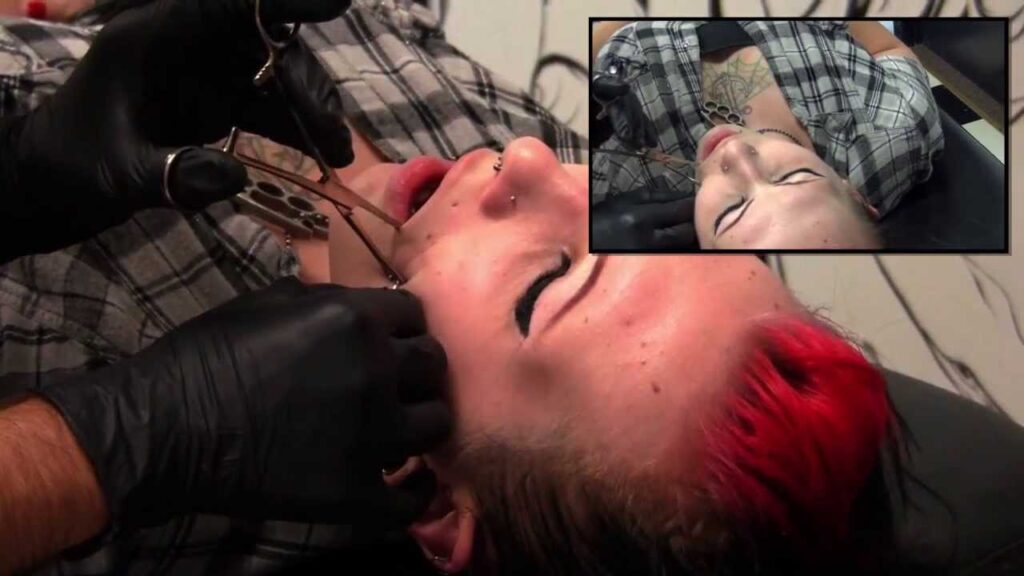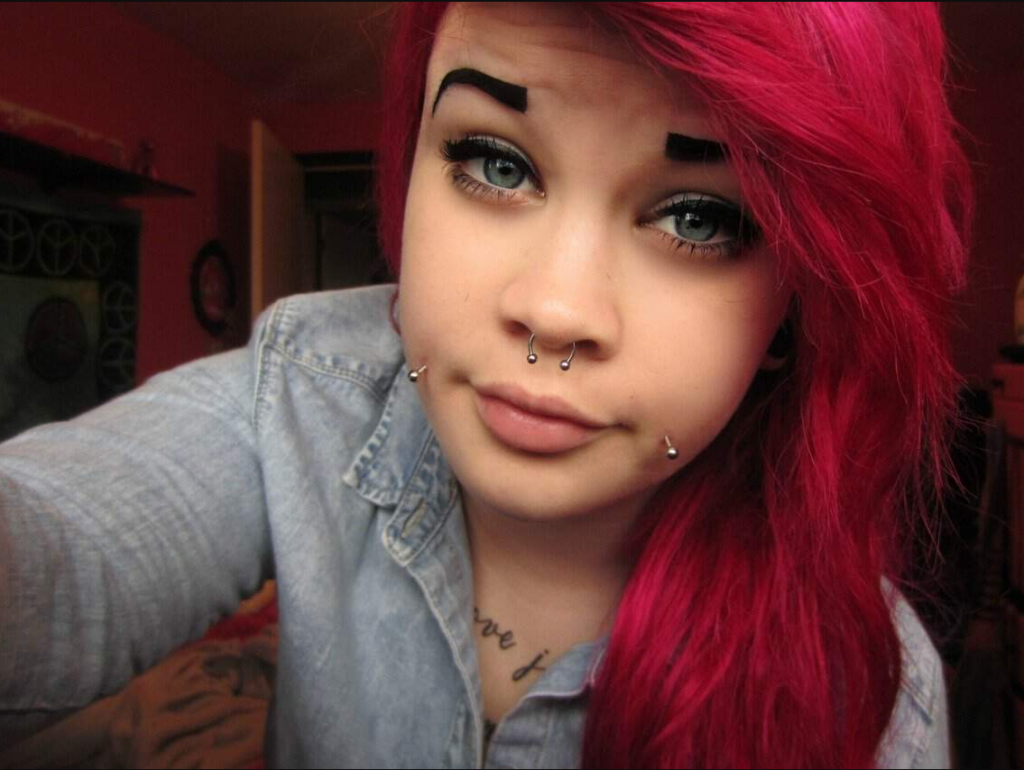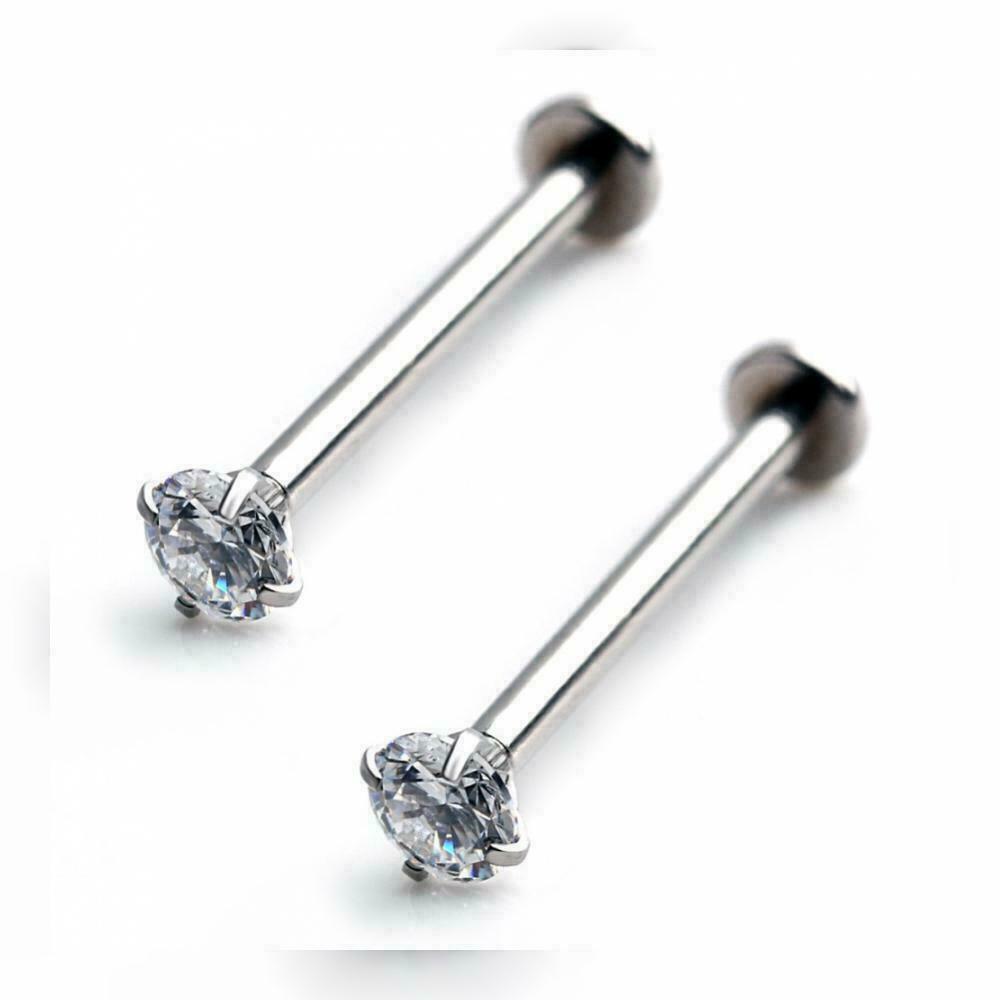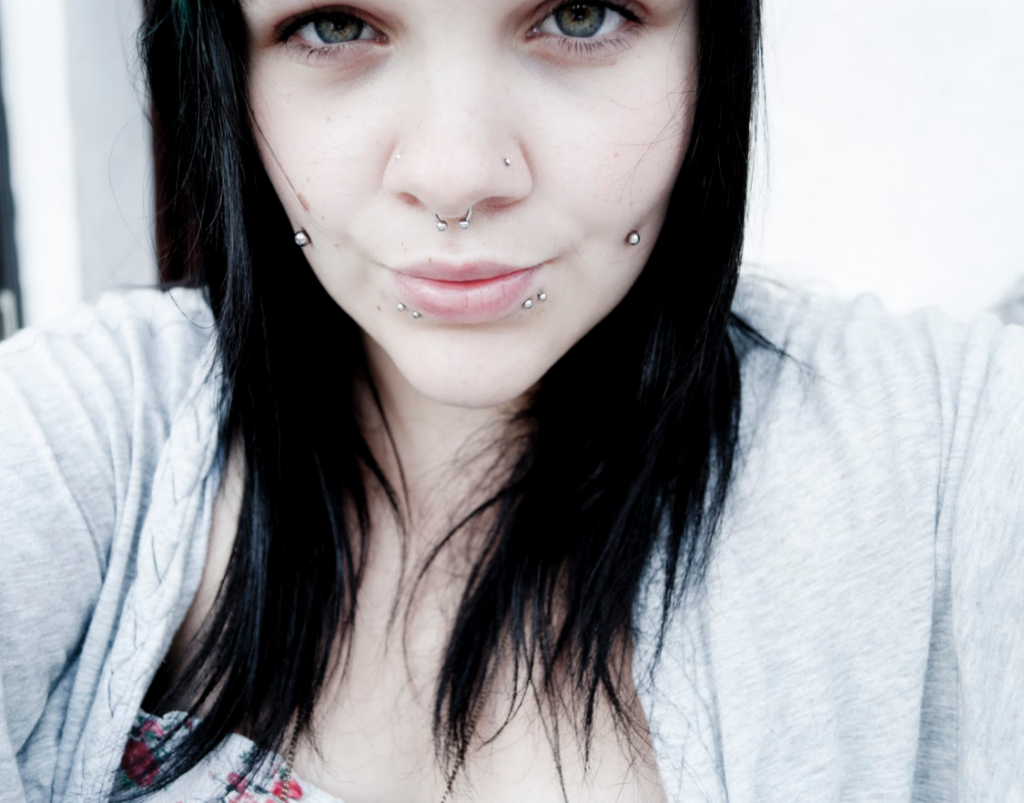Are you looking for cheek piercing information or would you like to know all about cheek piercings? We have a comprehensive insight including jewelry, scars, pictures, fake, upper cheek piercings or cheekbone piercing, aftercare (pain, swelling, healing, and infection) and much more.
Cheek piercing can be defined as facial piercings located on anywhere on your cheeks including on the upper cheek or cheekbone. In most instances, these piercings are symmetrical i.e. found on both cheeks. However, you could have them on one side.
You could opt for full cheek piercing i.e. those that penetrate from outside your cheek through your cheek tissue into your oral cavity, micro dermal implants (discussed in detail under dermal cheek piercing section) or cheek surface piercings (especially on the cheekbones).
How much are cheek piercings
Cheek piercing prices are not fixed and they will vary from one piercing studio to another. Factors such as the location and status of the shop, among other facts will affect the cost of the piercing. On average, expect to spend between $30 and $80. The price is slightly higher compared to other piercings since a lot of precision is required. Always go to an experienced piercer.
The piercing process

The cheek being fairly thick and with a lot of blood vessels, the process might cause bleeding and a little pain. During the process, the piercer should locate your parotid ducts, mark the spots you want piercing (they should not touch the parotid ducts), ask you to swish an oral rinse and prepare the piercing site skin from the outside.
He or she will then use either 14g or 16g needle and pierce from inside out to make jewelry pulling through the cheek hole piercing easier. If you opt for piercing from outside, the cork should be placed in your mouth to avoid accidental damage of gums, tongue or other mouthparts. Finally, the jewelry is then screwed. To reduce pain, topical anesthesia might be applied about 15 minutes earlier.
Dermal cheek piercing

Instead of the conventional piercing, you could opt for dermal piercings (micro dermal implants) on your cheeks which are made of two components: an anchor, which is implanted underneath the skin, with a step protruding from (or flush with) the surface of the surrounding skin, and the interchangeable jewelry, which is screwed into the threaded hole in the step of the anchor.
Other than on your cheeks, dermal piercings can also be placed anywhere on your skin surface. They do not cause much scarring when you remove them, and they semi-permanent. However, care must be taken during the healing process, since they may be rejected with time and a few people have complained of headache from cheek dermal piercing.
Other benefits of dermal piercings on your cheeks include reducing the tendency to leak or secrete lymph fluid, which has a saliva-like texture and can create an unpleasant odor that is common on normal fully pierced cheeks. They also have lower infection rates and do not damage teeth or gums.
Cheek dimple piercing

Cheek dimple piercing is piercings that are placed on the dimple location either on an already existing dimple or in the same approximate area in order to simulate the look of a dimple. This creates man-made dimples on your cheeks or imitates dimples (i.e. cheek piercing without dimples)
You could go for a full piercing that reaches your oral cavity or opt for dermal piercing. Scarring is expected and the cost will be the normal cost we have seen above. However, you need a specialist since not any pierce can pierce your cheeks.
Cheekbone piercing or upper cheek piercing

Have you noticed people who have cheekbone piercing? Do you ever wonder how the piercings are made? Are they surface piercing or dermal piercings? How is it done?
Well, cheekbone piercings (also referred to as to upper cheek piercing or high cheek piercing) are piercings that are normally located on your cheekbone area which is on the upper part of your cheeks. Since they cannot be pierced through to your oral cavity, they have to be either surface piercings or micro dermal piercings.
Many people often confuse them with the anti-eyebrow piercings which is a small surface bar that is placed above the cheekbone or below the eyebrow. However, some sources refer to the anti-eyebrow piercings as high cheek or upper cheek piercing or even cheekbone piercing depending on its location.
If you opt for surface piercing, typical jewelry will be a surface bar, barbell, captive bead ring and curved barbell. However, for dermal piercing, it should be done with a specialist as already seen.
How much does a cheekbone piercing cost

The cost of cheekbone piercing will depend on whether you opted for surface piercing which will be more or less as the normal cost of piercing your cheeks, while typical costs for microdermal implants are about $70 to $100. The jewelry will cost up to $20.
Can I have fake cheek piercings
If you are considering a fake piercing on your cheeks, you deserve to know there is a possibility of having magnetic jewelry that is strong to hold the jewelry piece in place on the outside your cheek while the magnetic piece will be on the inside of your cheeks. This way, you do not have to make a hole through your cheek and it can be removed any time you do not need it.
After intensive research, we were unable to find any magnetic jewelry that can be used as a fake piercing on the cheek. However, this does not mean they do not exist.
Do cheek piercings hurt or swell?

Cheek piercing pain isn’t much, it is comparable to the pain of piercing your lips. On a pain scale of 1 to 10, 1 being painless and 10 being very painful, I will place it on a scale of 3 to 5. The problem may be swelling afterward which often makes smiling and eating difficult and it might hurt a lot. The swelling will subside after a few days and within a week or two, you can smile just fine. To some people, swelling might take longer.
To minimize swelling, suck ice chips, apply cold packs, try anti-inflammatory medications, drink cold liquids, also, try natural anti-inflammatory such as chamomile tea as well as arnica supplements.
Cheek piercing aftercare and healing time

Healing normally takes between 8 and 12 weeks. It might take longer (more than 6 months while a few people have reported the healing process to have taken over a year). You can change your jewelry after 6-8 weeks. Generally, the longer you take before removing your jewelry, your piercing holes will be stronger and better reinforced.
To minimize the chances of infections and make healing faster, clean the piercing both from the inside and outside your cheek using saline solution or piercing solution twice a day. For cleaning outside your cheek, you can also use various products such as Recovery Piercing Aftercare Spray or H2Ocean oral rinse and a cotton pad to thoroughly clean the piercing for about 5 minutes. For cleaning inside your mouth, swish your mouth with sea salt oral rise for about 5 minutes and ensure good oral hygiene including the use of an antibacterial alcohol-free mouthwash.
During the cheek piercing healing process facial and oral piercing care is required i.e. care from the outside and inside the mouth to ensure there is no infection, bumps, keloids or pronounced scarring. In the initial healing stages a lot of care is required. The aftercare routine is recommended:
- Men need to shave carefully to avoid injuries:
- Avoid smoking and drinking alcohol
- Avoid rubbing the jewelry against your teeth or gums
- When applying makeup and hairsprays, women need to cover or ensure the piercing site is not touched.
- In case of bumps or infection, try diluted tea tree oil.
- Minimize participation in physical activities that can cause injuries
- Avoid taking spicy foods
- Avoid touching or fiddling with your piercing jewelry
It is normal to have a clear white discharge that might begin to crust when it dries. However, if you notice, yellowish or green pus that is much thicker, it could be a sign of infection. Kindly begin treating your infected piercing.
See more on piercing infection including care, treatment, signs and symptoms
Cheek piercing jewelry and retainers

Most piercings on cheeks are done with a regular barbell to avoid chances of the cheek tissue from growing over it. Alternately, you can use a 16 to 12 gauge labret studs with a flat back. The flat back reduces the chances of gum and tooth damage. However, during the healing process, the cheek might heal over your flat back labret stud and this might require cutting it out from inside your mouth. This makes the jewelry with the ball instead of the flat back especially made of acrylic or soft material to be ideal.
Jewelry length is usually around 1” or (18 to 24 mm) in length but typical lengths vary from 1/2″ to 1 1/2” to give allowance for swelling immediately after the procedure. The thickness of your cheek might influence which length will be ideal. Taking short jewelry can put pressure on the piercing leading to tissue death, a condition known as necrosis. Once you have fully healed, shorter jewelry is used, usually 16-18mm in length to reduce gum and teeth damage as well as unintentional biting.
If you need cheek piercing jewelry, they are available online for sale on the various leading jewelry shops including eBay, amazon.com. Some of the popular ones are 16g, 14g with bar lengths ranging from ¼” to 2” (with 3/4″ or 5/8″ sizes also available) and about 4mm gem on inside while on the outside you can have about 3mm balls. They could be internal labret style or internal straight steel barbell. The gem ball might be part of the jewelry or bought separately.
On material and physical look, you can opt for clear jewelry, diamond, gold, steel, etc. However, ensure you avoid low-quality material since they have a tendency of causing allergic reactions. As a starter, it is advisable, to begin with, BioFlex (PTFE) barbells which are soft. This will minimize the chances of tooth damages.
When you do not want to wear piercing jewelry e.g. at work, school, church, or family gatherings, or you have to insert non-metallic body jewelry to get you through medical procedures like surgery, you should ensure you have a good retainer to take the place of your jewelry. There are many clear or flesh-colored retainers on sale made from silicone, acrylic, bioplastic, etc. that can hide a piercing effectively.
Cheek Piercing Jewelry Length Chart

To give you an idea of what kind of piercing lengths will be ideal, see the below jewelry length chat. Factors such as the thickness of your cheek can influence which length will be ideal.
Cheek piercing scars and removal
One of the dreaded things about any piercing is scars. Piercings on cheeks are no exception as you are likely to end up with cheek piercing scars. If you did not know, it is almost guaranteed you are going to have a permanent scar as a result of piercing your cheeks i.e. according to Steven Wallach, MD, and a Manhattan Plastic Surgeon, anybody piercing will cause a permanent scar. Yes, the scar should fade over time, but it will leave a permanent mark. It is worthwhile noting that the aftercare is given, as well as the reaction of your skin to the piercing, can determine the size of scar you might end up with.
The next obvious question you want to know is if the cheek piercing scar can be removed or treated. Steven Wallach notes that Vitamin E has not shown to improve scars at all, and Mederma has not been proven to help either. Most of the time, the scar will mature on its own.
However, if the scar is so visible and pronounced, you can go for a correction surgery where you have to “trade-off for a minor surface line scar as a result of the correction, but these scars would be much less noticeable” Thomas T. Le, MD Baltimore Facial Plastic Surgeon [realself.com]. However, the correction means a new scar will develop which might be less noticeable, as Richard H. Tholen, MD, FACS, Minneapolis Plastic Surgeon notes, “NO surgeon or surgical technique exists that can completely remove or eliminate scars”
Problems, risks and dangers of piercings on your cheeks

There are a number of risks, problems or dangers associated with these piercings that include scarring, parotid duct damage (if the piercing is wrongly placed and punctures the parotid duct, you will have constant saliva streams from outer and inner cheeks piercing hole), susceptibility to infections, teeth and gum damages, raptured arteries that can bleed so much (for instance, on 24th February 2014, Mirror reported a story of a woman who was almost killed with a cheek piercing due to excessive bleeding), among others.

